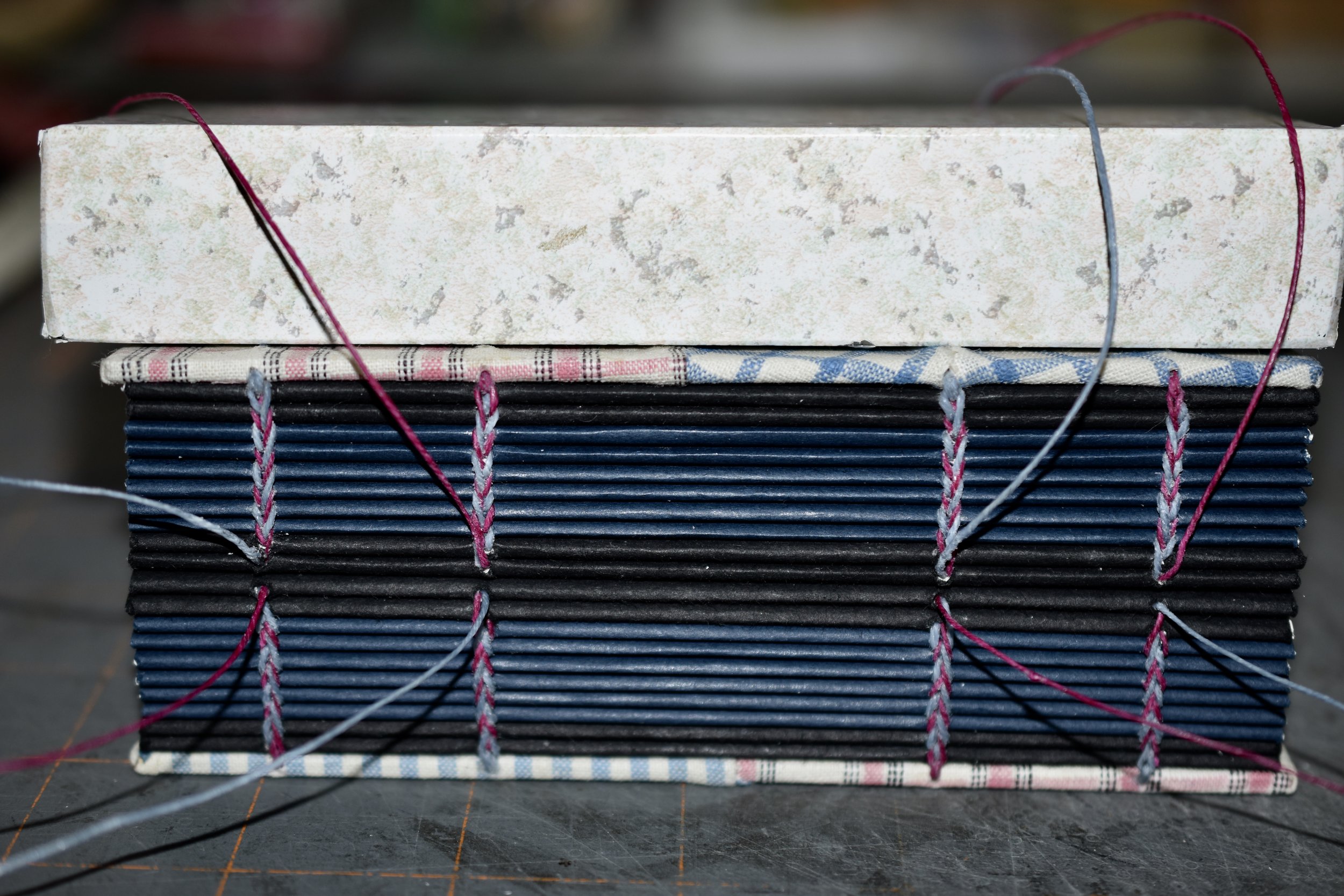I had printed patterns using relief blocks onto an old quilt square. I added bits of embroidery and then backed the fabric using paste and kozo paper (a Japanese technique called Urauchi). I will use this on the covers. I added a recessed area to the front cover, after cutting Davey board to the desired size.
The interior sections have been folded and cut to size. I used a navy blue French paper and black Ingres paper for end pages and Mohawk superfine for the text pages. The Greek Coptic structure enables a thick book. This particular book has twenty sections. The jig shows the pattern of the sewing stations. The colors of the waxed linen threads work well with the fabric colors.
Sewing.
What a beautiful form the opened Greek Coptic is!
I also bound a couple of miniature Greek Coptic books using backed quilt squares. Here are some images of them.
I added closures using waxed linen threads and vintage buttons.
I added a bit of the fabric to the inner front covers, an element of surprise when opening and handling the books.
I learned how to bind a Greek Coptic book a couple of years ago. It is a beautiful book structure; which I hope to teach in the future. I recently revisited the structure to practice and hone my skills.
The cover boards are now covered with the backed quilt square. The patterns and lines of the cloth, the printed patterns, and the embroidery came together nicely. I pasted a black piece of Ingres paper into the recessed area and then added a piece of the backed cloth. I was pleased with how this added yet another element to the front cover.
The sewing stations have been punched with an awl into the interior sections. The book is now ready for sewing!
Each half has been sewn using a chain formed by locking the loop stitch. The two halves will be joined by alternately linking the top and bottom threads (similar to braiding).
All sewn up….the contrasting colors of the waxed linen threads show up nicely on the navy and black end pages.
Another view of the spine.
‘Slinky’ like when opened.
Completing these books was a great way to relearn this structure. I hope the opportunity to teach the Greek Coptic arises!











